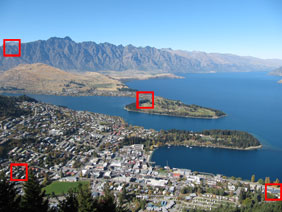Canon PowerShot SX200 IS
-
-
Written by Gordon Laing
Canon SX200 IS vs Panasonic TZ7 / ZS3 vs Canon SX10 IS Resolution
Canon PowerShot SX200 IS results : Real-life resolution / High ISO Noise
Canon PowerShot SX200 IS |
Panasonic Lumix DMC-TZ7 / ZS3 |
Canon PowerShot SX10 IS | ||
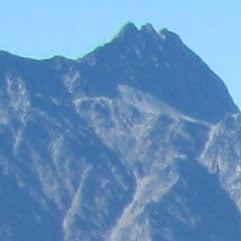 |
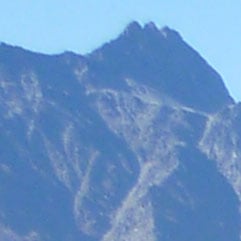 |
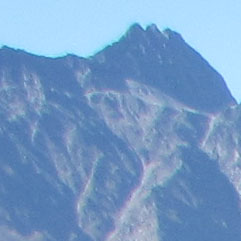 | ||
f4, 80 ISO |
f4, 80 ISO |
f4, 80 ISO | ||
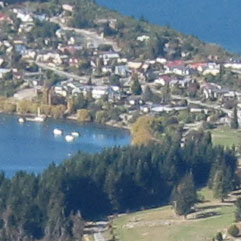 |
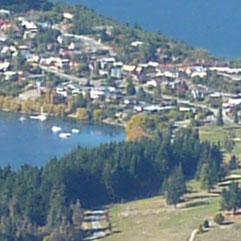 |
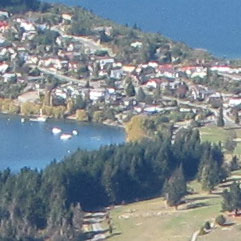 | ||
f4, 80 ISO |
f4, 80 ISO |
f4, 80 ISO | ||
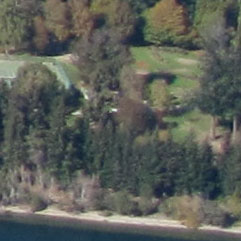 |
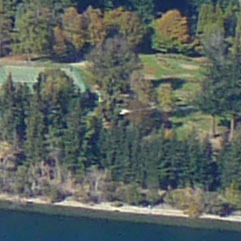 |
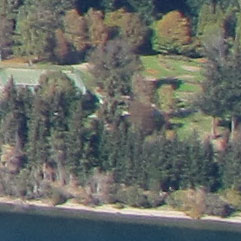 | ||
f4, 80 ISO |
f4, 80 ISO |
f4, 80 ISO | ||
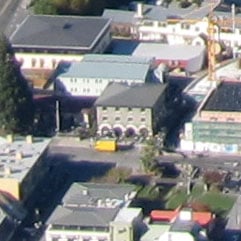 |
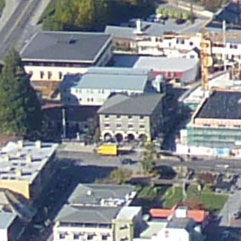 |
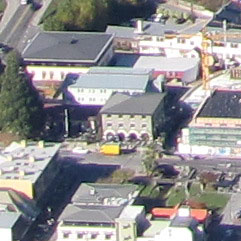 | ||
f4, 80 ISO |
f4, 80 ISO |
f4, 80 ISO |
To compare wide-angle performance, we shot this scene with the Canon PowerShot SX200 IS and PowerShot SX10 IS zoomed-out to their widest equivalent focal lengths of 28mm. The Panasonic TZ7 / ZS3 boasts a slightly wider 25mm equivalent, but we zoomed it in slightly here to match the 28mm coverage of both Canons. As before, we used their best quality JPEG settings, lowest sensitivities and default processing options. Both Canons were again set to Program and the Panasonic to Normal mode to evaluate their automatic performance. The image to the left was taken with the Canon PowerShot SX200 IS at a sensitivity of 80 ISO, and the lens set to 5mm (28mm equivalent), f4; the original Large Fine JPEG file measured 3.28MB. The crops are taken from the areas marked by the red squares and presented here at 100%. Note the Panasonic TZ7 / ZS3 and Canon PowerShot SX10 IS crops show a slightly larger area because of their slightly lower resolution. With all three cameras zoomed-out to an equivalent of 28mm, very fine details have tripped-up Panasonic’s over-zealous processing to deliver an inferior-looking result on the second row of crops. Both Canons look more natural in this portion of the image, although again there’s no detail benefit of the SX200 IS over the SX10 IS. The final two rows of crops are taken from the bottom corners and reveal all three cameras deliver fairly good results with little to worry about in terms of sharpness. Coloured fringing is the main difference here with the SX10 IS suffering the worst, and the SX200 IS showing a little. Panasonic’s TZ7 / ZS3 impressively shows no fringing at all, but this is due to the camera digitally reducing the effect on its JPEGs. It’s a very effective technique and a shame Canon isn’t doing the same, although considering there’s no fringing correction taking place that we know of on the SX200 IS, its results here aren’t at all bad. But there’s still one more test to come on this page, so scroll down to see how they compare when zoomed-in. |
Canon PowerShot SX200 IS |
Panasonic Lumix DMC-TZ7 / ZS3 |
Canon PowerShot SX10 IS | ||
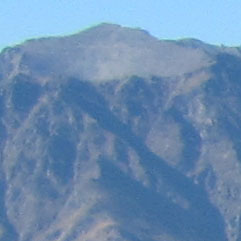 |
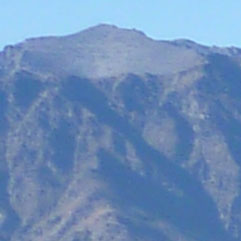 |
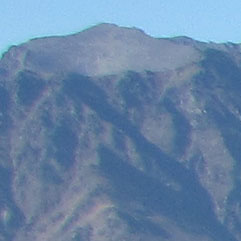 | ||
f4, 80 ISO |
f4.5, 80 ISO |
f4, 80 ISO | ||
 |
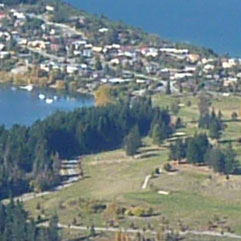 |
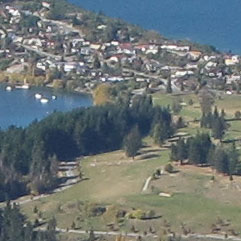 | ||
f4, 80 ISO |
f4.5, 80 ISO |
f4, 80 ISO | ||
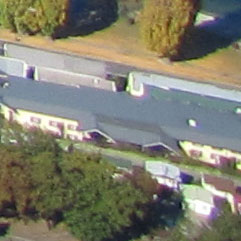 |
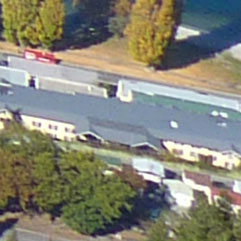 |
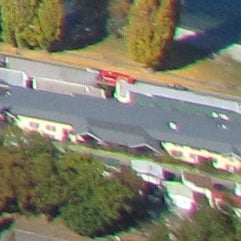 | ||
f4, 80 ISO |
f4.5, 80 ISO |
f4, 80 ISO | ||
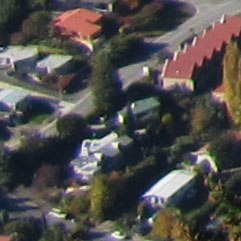 |
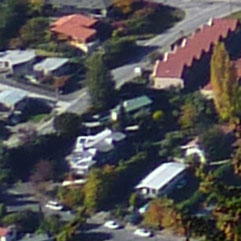 |
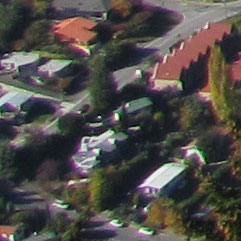 | ||
f4, 80 ISO |
f4.5, 80 ISO |
f4, 80 ISO |
To compare telephoto performance, we shot this scene with the Canon PowerShot SX200 IS and Panasonic Lumix TZ7 / ZS3 fully zoomed-into their maximum focal lengths of 336 and 300mm respectively. We matched the coverage of the SX10 IS with the SX200 IS sample, although this was only just over halfway through its longer 20x range. As before, we used their best quality JPEG settings, lowest sensitivities and default processing options. Both Canons were again set to Program and the Panasonic to Normal mode to evaluate their automatic performance. The image to the left was taken with the Canon PowerShot SX200 IS at a sensitivity of 80 ISO, and the lens set to 60mm (336mm equivalent), f5.3; the original Large Fine JPEG file measured 3.63MB. The crops are taken from the areas marked by the red squares and presented here at 100%. Note the Canon PowerShot SX10 IS shows a larger area in the crops due to its lower resolution. The Panasonic TZ7 / ZS3 shows a larger area still because of its lower resolution and shorter focal length used in this test. Most super-zoom cameras suffer from coloured fringing when zoomed-into their longest focal lengths, and both Canons are showing the signs here. The SX200 IS looks a little worse in this respect than the SX10 IS, but it’s important to remember its higher resolution effectively magnifies the size of artefacts when viewed at 100%. If both images were printed the same size, the fringing artefacts would appear similar in size. Finally we’re also seeing a resolution advantage to the SX200 IS on the second row of crops, where it’s resolving finer detail on the roof compared to the SX10 IS which is zoomed-into the same amount; note the TZ7 / ZS3 unsurprisingly doesn’t record this detail because of its lower resolution and shorter maximum focal length. On the third and fourth row of crops taken from the edges though, the SX200 IS is beginning to suffer more so than its rivals. Coloured fringing is worse on the SX200 IS than the SX10 IS in these crops and the overall image is a little softer. It’s once again impressive to note how effectively the Panasonic TZ7 / ZS3 eliminates coloured fringing in these crops, although the edges of some subjects look fuzzier and less defined than the Canons here, even taking resolution and focal length into consideration. So like most super-zooms, the SX200 IS suffers from coloured fringing, and there’s little visible benefit in resolution over 10 Megapixel models. But while its rivals beat it in some respects on this page, the SX200 IS still performs reasonably well in our real-life tests. But how does it measure-up in terms of sensitivity? Find out in our Canon PowerShot SX200 IS High ISO Noise results. |
Canon PowerShot SX200 IS |
Panasonic Lumix DMC-TZ7 / ZS3 |
Canon PowerShot SX10 IS | ||
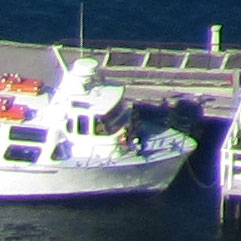 |
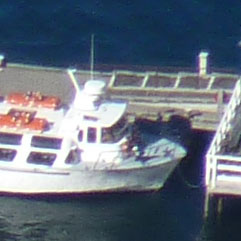 |
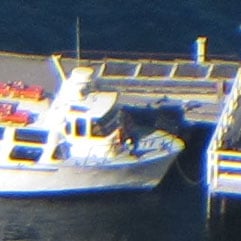 | ||
f5.3, 80 ISO |
f5.6, 80 ISO |
f5, 80 ISO | ||
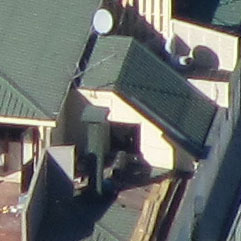 |
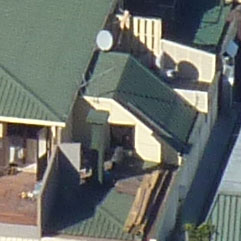 |
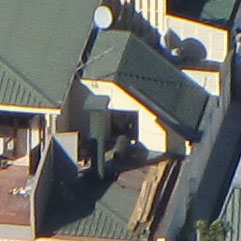 | ||
f5.3, 80 ISO |
f5.6, 80 ISO |
f5, 80 ISO | ||
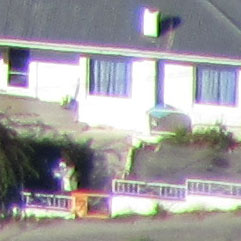 |
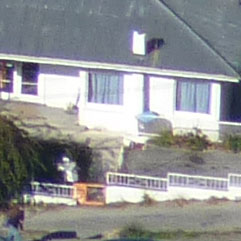 |
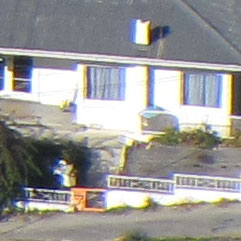 | ||
f5.3, 80 ISO |
f5.6, 80 ISO |
f5, 80 ISO | ||
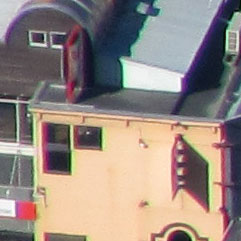 |
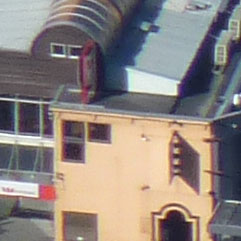 |
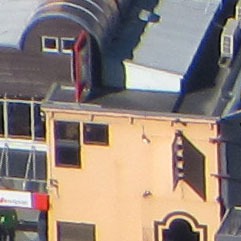 | ||
f5.3, 80 ISO |
f5.6, 80 ISO |
f5, 80 ISO |
Canon PowerShot SX200 IS results : Real-life resolution / High ISO Noise
|
|
The image above was taken with the Canon PowerShot SX200 IS at a sensitivity of 80 ISO, and the lens set to 6mm (34mm equivalent), f4; the original Large Fine JPEG file measured 3.41MB. The crops are taken from the areas marked by the red squares, and are presented here at 100%. The Panasonic TZ7 / ZS3 and Canon PowerShot SX10 IS crops show a slightly larger area because of their slightly lower resolution.
The PowerShot SX200 IS boasts two additional Megapixels over the other two cameras here, but you’d be hard-pushed to notice a great deal of difference in terms of real-life detail in the crops below. Indeed in the third and fourth row of crops, the SX200 IS suffers from a softness which isn’t apparent in the crops from the other two models. It’s not anywhere as bad as we saw with the Canon IXUS 100 IS / PowerShot SD780 IS, but both cameras seem to optically suffer in these areas and neither show any visible benefit of having 12.1 Megapixels over those models with ‘just’ 10.
It is however worth noting Panasonic is applying greater contrast and sharpening on its default JPEGs, giving them a punchier appearance, albeit one with occasional artefacts around some edges.
So a slightly disappointing start for the SX200 IS in our tests, but far from disastrous and only the first of many results, so scroll down to find out how it compares when full zoomed-out, and fully zoomed-in. Alternatively if you can’t wait to see how the cameras compare in terms of high sensitivities, then head straight over to our Canon PowerShot SX200 IS High ISO Noise results.
